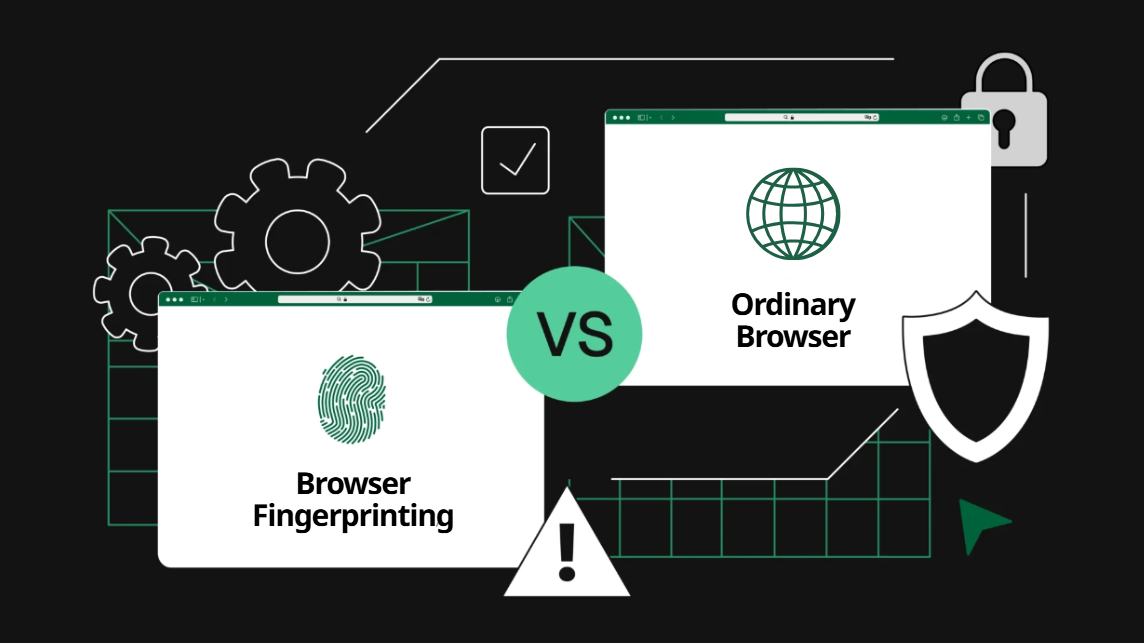Ordinary Browser vs Fingerprint Browser: Which One Should You Use for Multi-Account Marketing?

If you’ve ever tried running multiple social media accounts, e-commerce stores, or ad campaigns at the same time, you’ve probably hit a frustrating wall: account blocks.
It often happens like this—everything seems fine, and then suddenly, one account after another gets flagged or banned. That’s when many marketers start to wonder: Is a fingerprint browser the answer?
Let’s break it down.
Ordinary Browser: Why It Fails for Multi-Accounts
Ordinary browsers like Chrome, Firefox, or Edge are built for daily personal use. They work great if you just want to browse the internet, shop online, or check your email. But once you start running multiple accounts, especially on the same platform, things get tricky.
Why? Because ordinary browsers leak a lot of identifiable data, such as:
Device information (screen size, OS version, fonts, etc.)
IP address
Cookies and cache
Browser fingerprint (a unique identifier created from dozens of hidden data points)
When platforms detect multiple accounts with the same “fingerprint,” they quickly connect the dots. This is why many marketers get banned, even if they’re using a VPN or proxy.
Fingerprint Browser: A Smarter Alternative
Fingerprint browsers are built specifically for multi-account management. Instead of letting platforms track you with one fingerprint, they allow you to create unique browsing environments for each account.
Here’s what makes them different:
Customizable fingerprints: Every browser profile looks like a unique user, with its own OS, timezone, language, and even hardware setup.
Separation of data: Each account runs in a completely isolated profile—no cookie leaks, no shared cache.
Proxy integration: You can bind a different proxy to each profile, ensuring accounts appear to log in from different locations.
Better security: Unlike ordinary browsers, fingerprint browsers are designed to make detection much harder, reducing the chance of mass bans.
So yes—a fingerprint browser is generally more secure than an ordinary browser when it comes to account stability.
VPNs vs Proxies vs Fingerprint Browsers
A lot of beginners rely only on VPNs or proxies. While these tools change your IP, they don’t change your browser fingerprint.
That means you’re still leaving behind a digital trail that platforms can pick up on. This is why many marketers experience bans even when using expensive residential proxies.
The real solution is combining a fingerprint browser + proxies. That way, both your IP and your browser fingerprint look natural.
Which Fingerprint Browser to Choose?
There are several options out there, but not all are built with marketers in mind. That’s where MarketerBrowser comes in.
Unlike general-purpose fingerprint browsers, MarketerBrowser is designed specifically for digital marketing and account management. With it, you can:
Run hundreds of accounts across different platforms without them ever colliding.
Assign proxies and fingerprints to each account with just a few clicks.
Organize accounts into categories for smoother campaign management.
Reduce bans and increase account lifespan, which means less stress and higher ROI.
In other words, it’s not just about browsing—it’s about giving marketers the tools they need to scale safely.
Conclusion
If your accounts keep getting banned, switching from an ordinary browser to a fingerprint browser isn’t just an option—it’s almost a necessity. VPNs and proxies help, but they’re not enough on their own.
With a tool like MarketerBrowser, you can finally stop worrying about account stability and focus on what really matters: growing your campaigns.


